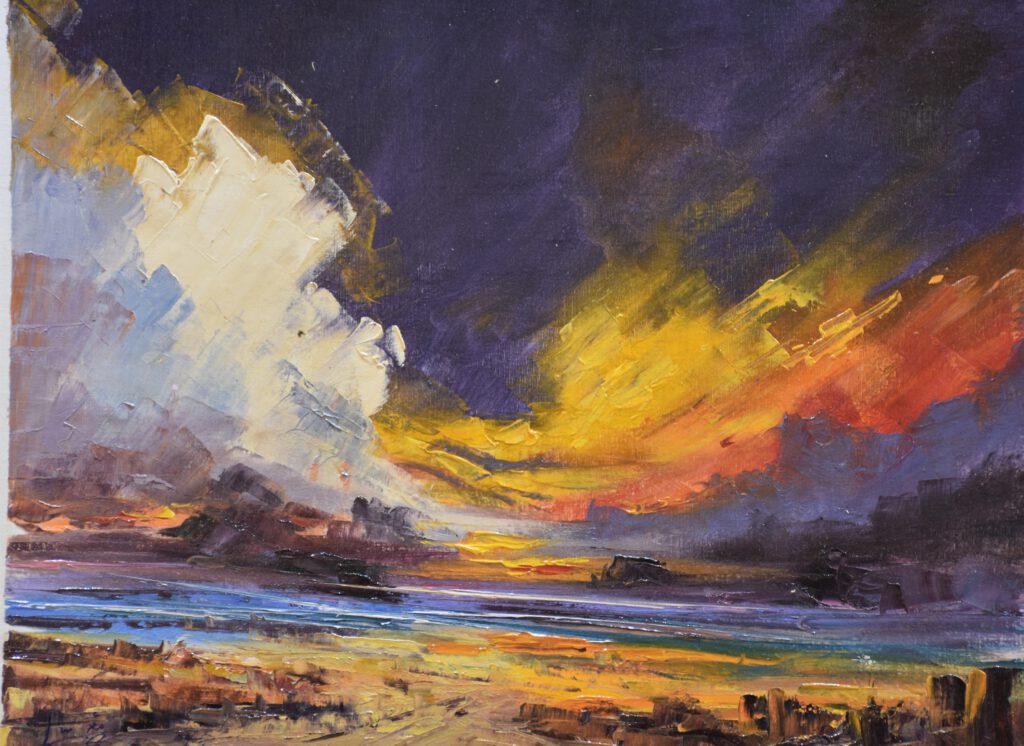Introduction to the Principles of Oil Painting
Oil painting is one of the most traditional and esteemed forms of artistic expression, dating back to the Renaissance era. Its rich texture, vibrant colors, and versatility have made it a favorite medium among artists for centuries. However, mastering oil painting requires a solid understanding of its principles and techniques. This article will explore the essential principles of oil painting, including the materials used, the foundational techniques, and the importance of practice and experimentation.
Materials for Oil Painting
The first step in oil painting is gathering the right materials. High-quality materials can significantly impact the final result and ease the painting process. The essential materials include:
- Oil Paints: Available in various grades, artists’ quality oil paints have a higher concentration of pigment and a smoother consistency. It’s crucial to choose a set of primary colors, along with black and white, to mix a wide range of hues.
- Brushes: Different brushes create different effects. Hog bristle brushes are ideal for thick, textured strokes, while softer synthetic brushes are better for fine details and smooth blending.
- Canvas: Traditionally, oil paintings are done on canvas, which provides a durable and flexible surface. Canvases can be pre-primed with gesso to prevent the oil from seeping into the fibers.
- Mediums: Oil mediums, such as linseed oil, turpentine, and stand oil, are used to alter the paint’s consistency, drying time, and finish. Knowing when and how to use these mediums is crucial for achieving desired effects.
- Palette and Palette Knife: A palette is used for mixing colors, while a palette knife is an essential tool for blending paints and applying thick layers of paint onto the canvas.
- Easel: An easel holds the canvas in place, providing a comfortable working position and allowing the artist to step back and evaluate their work from a distance.
Fundamental Techniques of Oil Painting
Once the materials are in place, the next step is to understand and apply the fundamental techniques of oil painting:
- Layering (Fat Over Lean): One of the core principles of oil painting is to apply layers of paint with increasing fat content (more oil) on top of lean layers (less oil). This prevents cracking and ensures the longevity of the artwork. The initial layers should be thin and fast-drying, while subsequent layers can be thicker and slower-drying.
- Underpainting: This technique involves creating a monochromatic version of the painting, usually in earth tones, to establish the composition and values before applying the final colors. It serves as a guide and helps to build depth in the painting.
- Glazing: Glazing is the application of a thin, transparent layer of paint over a dry layer. This technique enhances luminosity and allows light to penetrate through layers of color, creating a glowing effect. It’s often used to adjust tones and add richness to colors.
- Scumbling: This technique involves applying a thin, opaque layer of paint over a dry layer, allowing some of the underlayer to show through. Scumbling is effective for creating soft transitions and atmospheric effects.
- Blending: Blending is crucial for creating smooth transitions between colors and gradients. Oil paints, due to their slow drying time, are ideal for blending, allowing artists to create seamless transitions and realistic effects.
- Impasto: Impasto is the technique of applying thick layers of paint, often with a palette knife, to create texture and dimensionality. This technique adds a tactile quality to the painting and enhances the visual interest.
The Importance of Practice and Experimentation
Mastering oil painting is a gradual process that requires dedication, practice, and a willingness to experiment. Artists are encouraged to:
- Study the Masters: Observing and analyzing works by renowned oil painters can provide invaluable insights into techniques, color theory, and composition.
- Experiment with Techniques: Trying different methods, such as wet-on-wet, dry brushing, or using unconventional tools, can lead to unique and personal styles.
- Focus on Composition and Values: A successful painting often relies more on strong composition and accurate values than on color alone. Practicing sketching and underpainting can help refine these skills.
- Be Patient and Persistent: Oil painting is a medium that rewards patience. Allowing time for layers to dry, revisiting works with fresh eyes, and not being afraid to make changes are all part of the process.
Conclusion
Oil painting is a rewarding artistic practice that combines technical skill with creative expression. By understanding the materials, mastering fundamental techniques, and committing to continuous learning, artists can unlock the full potential of oil painting. Whether you’re a beginner or an experienced artist, the journey of exploring oil painting can lead to the creation of timeless and captivating works of art.
